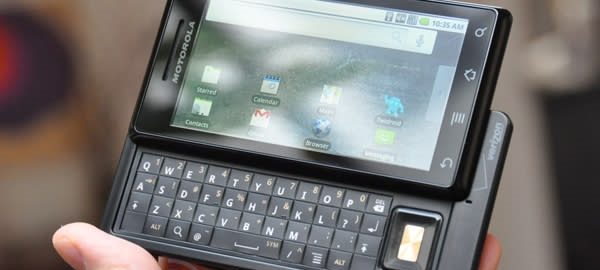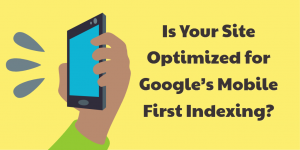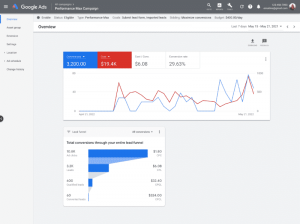Motorola DROID review
%Gallery-76849%
Video, on the other hand, was somewhat of a pleasant surprise. The DROID is capable of shooting at a 720 x 480 resolution, and in our tests, produced watchable — if not totally shake-free — video. The phone definitely fares better in this department than with stills, and we could easily see using the DROID as a stand-in for a flip cam. You can check out a little of the action in the video below (with a surprise cameo from !!!’s Nic Offer).
Motorola DROID
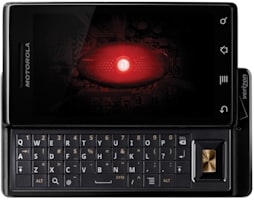
Pros
- Handsome and unique design
- Hardware keyboard
- Google Navigation on-board
Cons
- Hardware keyboard isn’t great
- Android software selection still thin
- UI still not a seamless experience
Speaker / earpiece
The sound on the DROID is second to none — really. In fact, this is simply one of the best sounding devices we’ve ever used. Whether it’s audio through the loud (but undistorted) earpiece, or a speakerphone call — even music — the sound which Motorola’s device outputs is crystal clear. Now, obviously Verizon’s reception has something to do with our in-call sound, but it’s likely Moto put some thought into the aural aspect of the phone. There’s not really much to say except that we were more than pleased with the audio fidelity of the DROID, and we can only hope that future phone makers (ahem, Apple) look to this device as a high water mark in this department.
Software
You’ll notice some major changes within the browser, most notably the fact that when you load up pages now, you’re presented with a fully zoomed-out “overview” (much like the iPhone and Pre). If you’ve been griping about that weird, half-zoom that Android has relied on for so long (as we have), this is a breath of fresh air. Coupled with the DROID’s massive display, it makes navigating pages roughly a million times more pleasant. The updated browser also now supports double-taps to zoom (as does Google Maps) — making navigation a bit more natural — though we noticed some weird column display issues on our site and others. As we mentioned before, there’s still no multitouch, but this does stand in quite well for pinch zooming. While the overall browser speed still isn’t as snappy as the iPhone 3GS (or even the Pre), it’s a step up from previous efforts, and when you factor in little touches like auto-prediction on URL entry, it’s eminently usable.
As we said, most of the alterations are under the hood — not stuff that immediately jumps out at you, though there are some notable visual tweaks which bear mentioning. Google has added some new fades and cross-application animations into 2.0 which makes Android seem a bit more contemporary. Of course, older iterations of Android contained animations, but 2.0 seems far more polished to our eyes. Additionally, icons and elements have been updated across the board to give the OS a more modern look, sadly there is much of this UI and its applications that remain unchanged — and not for the better.
A few of the obvious spots include the music player, which is quite frankly a mess; not only is the navigation poorly thought out, but the application is just straight-up ugly. It’s not easy on the eyes, and not much fun to use either. The same goes for the phone app — the remnants of a hastily thrown together interface are plain here, and the functionality of the phone itself gave us some issues. Often the screen was confused or unresponsive during calls, as if the hardware and software weren’t communicating with each other properly. It seems obvious to us that some portions of Android need a serious, ground-up reworking… but they don’t get them here. Another annoyance was the home screen — unlike with HTC’s tweaks (or even Motorola’s BLUR), you only get three screens for icons and widgets. Furthermore, the DROID doesn’t come equipped with even the most basic widgets you see in most new builds, like weather. The weird thing is that there is a weather app in the dock display, but no way to access the application in standard phone mode.
Additionally, some third-party (and even some first-party) software seems unable to deal with the DROID’s new resolution. There are bitmaps that look upscaled and jagged, such as the attachment icon in Gmail. The game Robo Defense seemed to play slower than it did on the Hero, which was a bit of a surprise, though it has been updated to support the new resolution. None of these problems are show stoppers, but it points to a disconnect between where Google is at versus its developers. There is catch-up to be played.
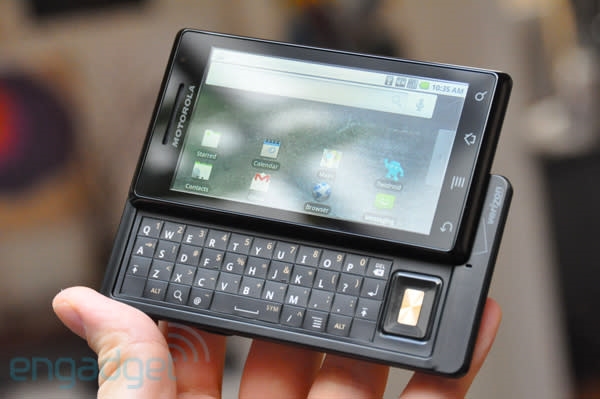
Also notable (and perhaps a selling point for some) is that the DROID is a Google Experience device, which should theoretically mean that it’s more likely to receive fast and frequent software updates than its skinned cousins like the CLIQ. The Google Experience is sort of the “gold standard” Android showcase for the company, so to speak, and it’s in Google’s best interest to keep it rock solid at all times — and since there’s no third-party skin to revalidate after every Android version is released, the update process should go a heck of a lot smoother.
One thing to keep in mind: when it comes to media syncing, you’re in the same boat you were for previous versions of Android — which means sideloading or additional desktop apps. doubleTwist has just introduced DROID compatibility, though the experience leaves much to be desired. In fact, after our tests, we’d say you’re better off just mounting that SD card and dragging your content over.
%Gallery-76853%
Navigation
One of the biggest pieces of news (perhaps the biggest) to come out of the DROID launch was the introduction of dedicated, fully realized turn-by-turn navigation which integrates with Google Maps. The DROID makes further use of this functionality by switching into a nav mode when snapped into a dock (you can also enter the application normally, sans dock). Google has gone all out on this, providing a rich mixture of its satellite, map, traffic, and location info with text-to-speech directions. Of course, the big G takes it one step further and adds layers like parking info, ATM spots, restaurants, and gas station locations (amongst others) to the stew, making the navigation more robust than many dedicated PNDs — which would explain that nasty drop in Garmin and TomTom stock we saw (January 27, 2023).
In our tests, the nav worked excellently for the most part, though as you can see in the video above, we did run into some minor issues on our hunt for cannoli. It’s not uncommon for a GPS unit to send you the wrong way down a one way street, and maybe it was just unlucky coincidence that it happened on our first outing, but being told to turn left where you can’t — then being sent in a loop — doesn’t fill us with warm, fuzzy sensations. Still, the navigation is super intuitive and cleanly laid out, and even if there were major issues (which there really aren’t), it’s hard to knock a service that is completely free. We think a little more time and some longer trips will help put it in better perspective, but we like what we’ve seen so far.
Accessories
It will be difficult for casual observers not to see the DROID as a kind of anti-iPhone in Verizon’s arsenal. Certainly the company has played up the comparison with its “DROID does” ad campaign, and it’s no secret that Verizon and Apple have previously had some friction — the V famously passed on the first-generation iPhone, after all. Of course, it’s easy to draw parallels between the two devices; as with most current smartphones, they share a tremendous number of similarities, though there is plenty that set the two apart as well. And that’s really kind of the point — it’s useless to look at devices like this in black and white, or to try and figure out if an Android device on Verizon is better than an Apple device on AT&T (or any other device on any other carrier, for that matter). What it ultimately comes down to when judging this kind of device is more complicated than a “yes” or “no” answer.
If you must compare the DROID to the iPhone, then know that the Android platform still has a ways to go before the experience of using the phone is as seamless as the one Apple has created — but also know that Apple has a long way to go before its messaging, email, and customization can match what Google is offering. Both products have very distinct strengths and weaknesses.
So, is the DROID a good smartphone? Yes, the DROID is an excellent smartphone with many (if not all) of the features that a modern user would expect, and if you’re a Verizon customer, there probably isn’t a more action packed device on the network. That’s not to say the device doesn’t have its faults; the camera was unpleasant to use, the application selection feels thin in both quantity and quality (despite the claim of 10,000 options), and the phone has bits of basic, non-intuitive functionality that might chafe on some users after a while. But even still, it’s hard not to recommend the DROID to potential buyers eager to do more with their devices. It’s easily the best Android phone to date, and when you couple the revamped OS, Verizon’s killer network, and an industrial design straight from a gadget enthusiast’s fever-dream, it makes for a powerful concoction. Ultimately, the DROID won’t usurp the iPhone from the public’s collective mindshare or convince casual users that they must switch to Android, but it will make a lot of serious geeks seriously happy — and that’s good enough for us.
(5)
